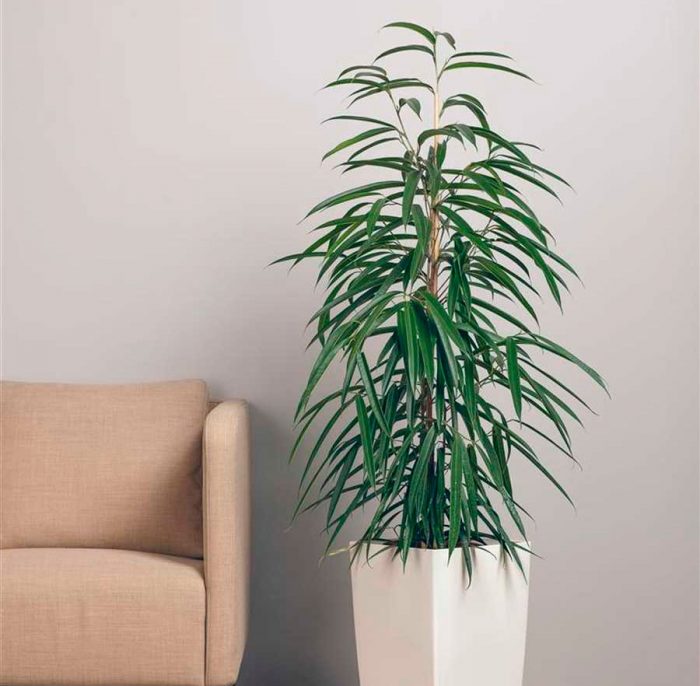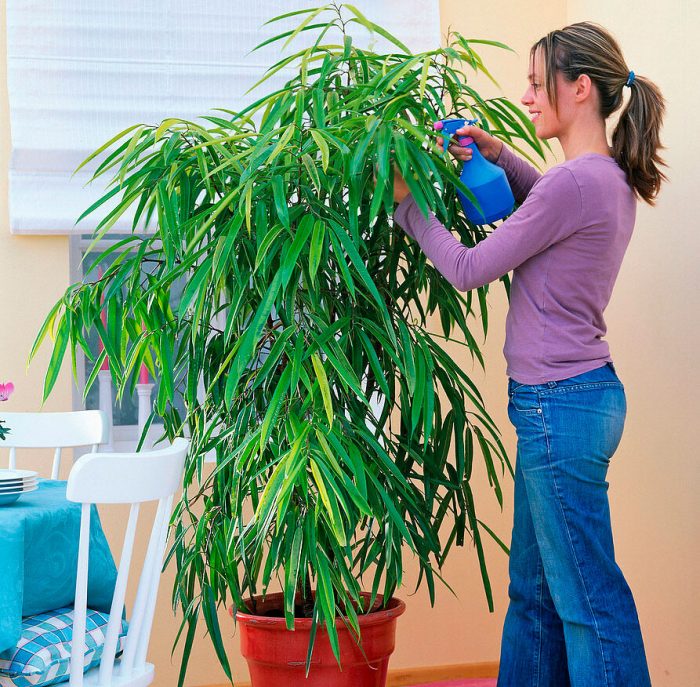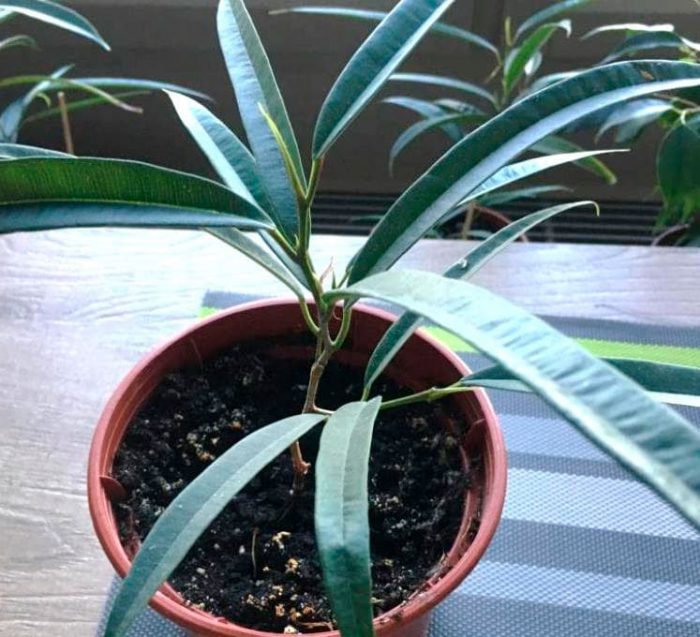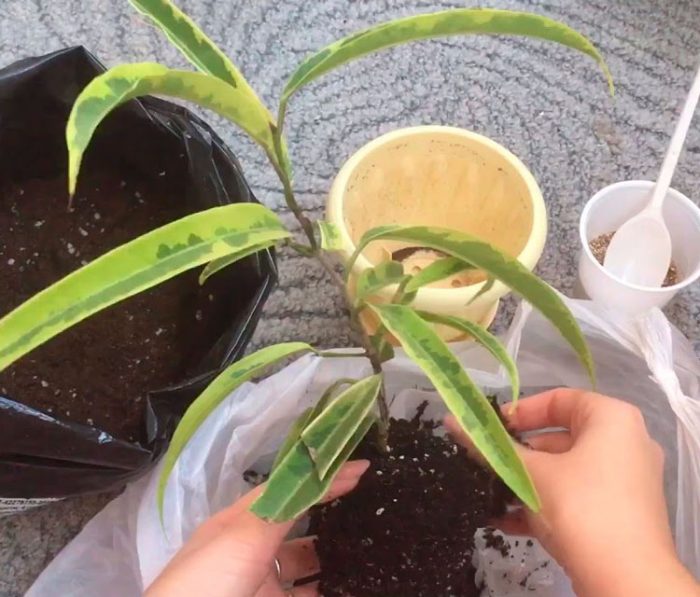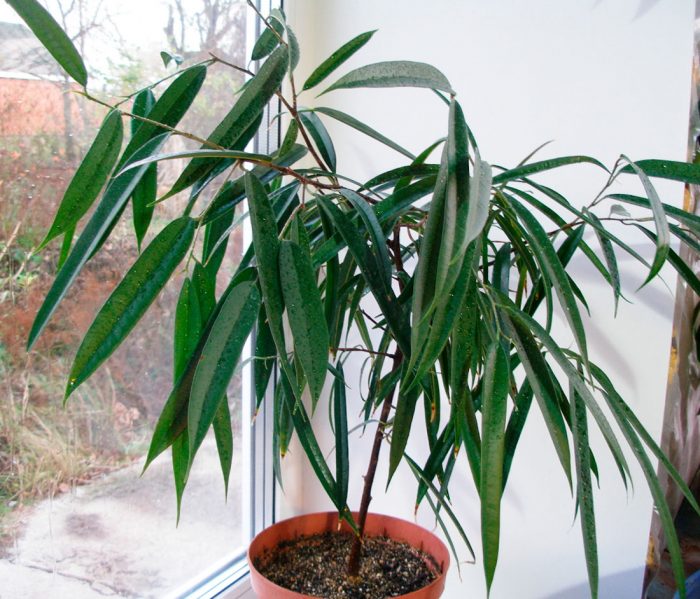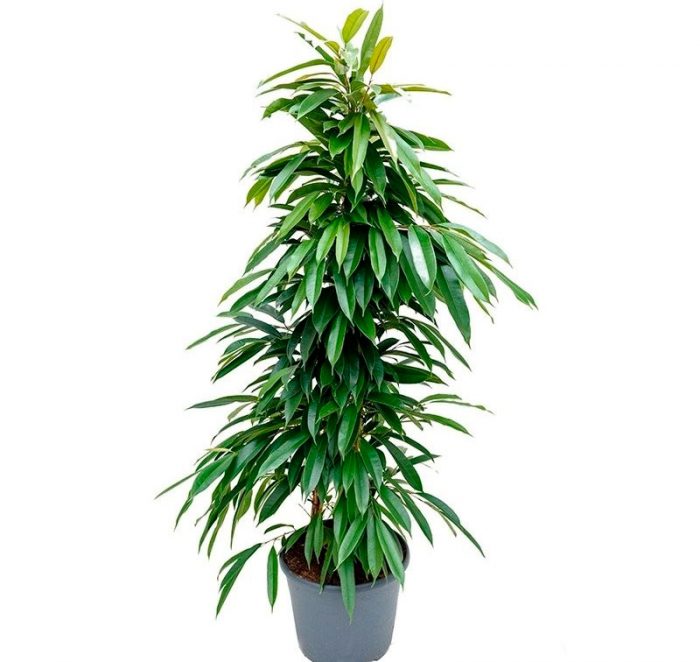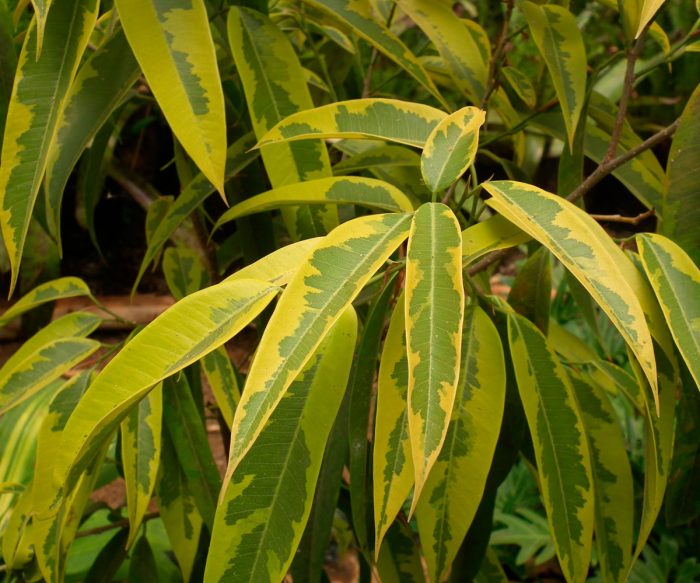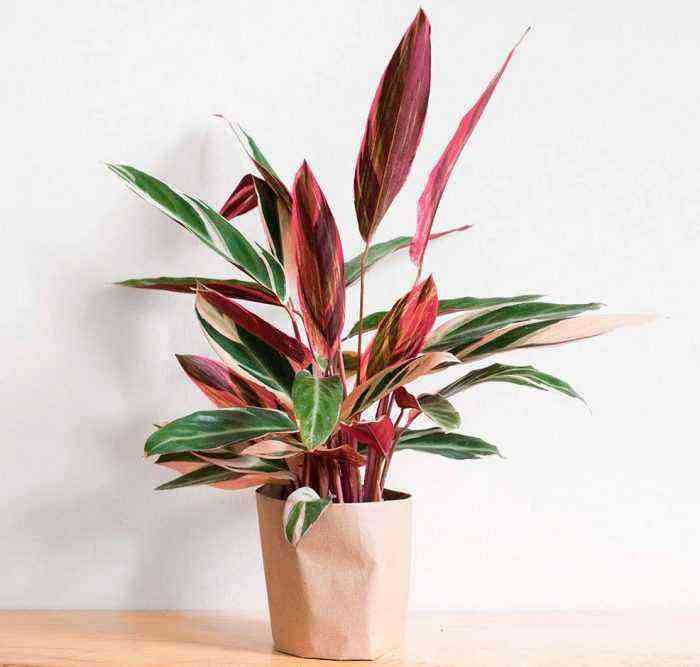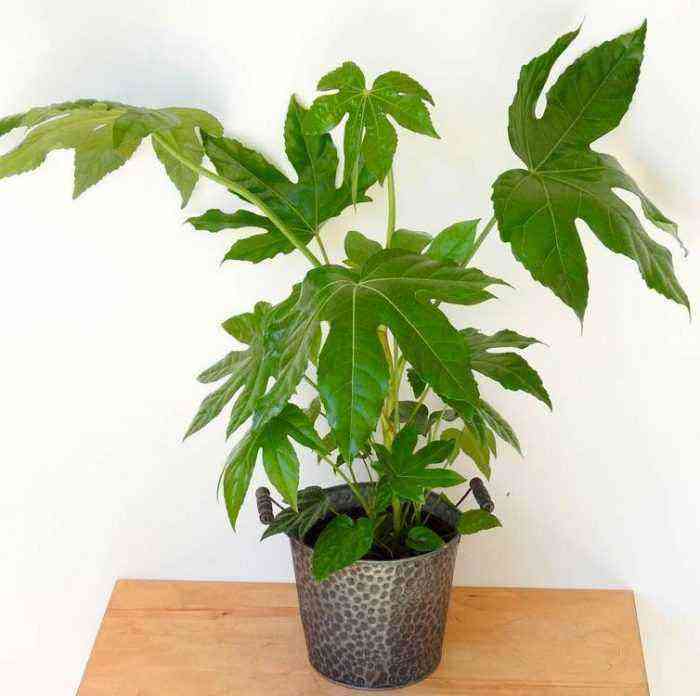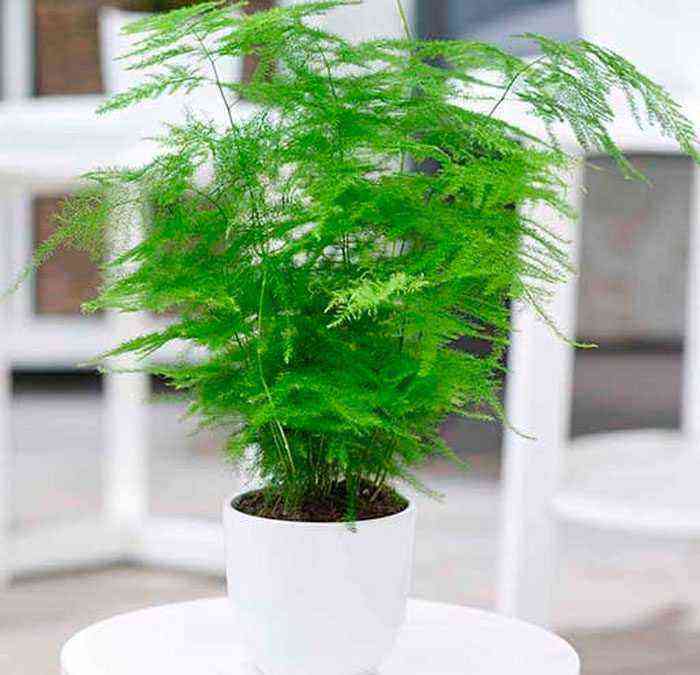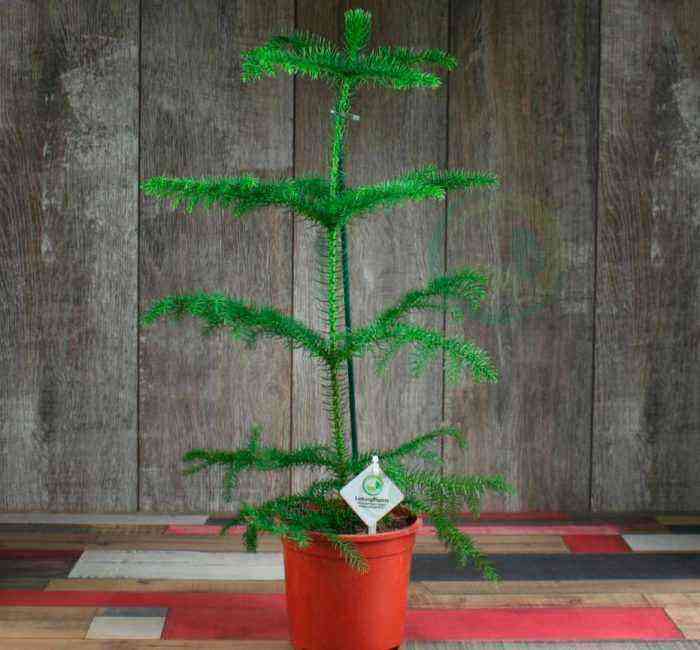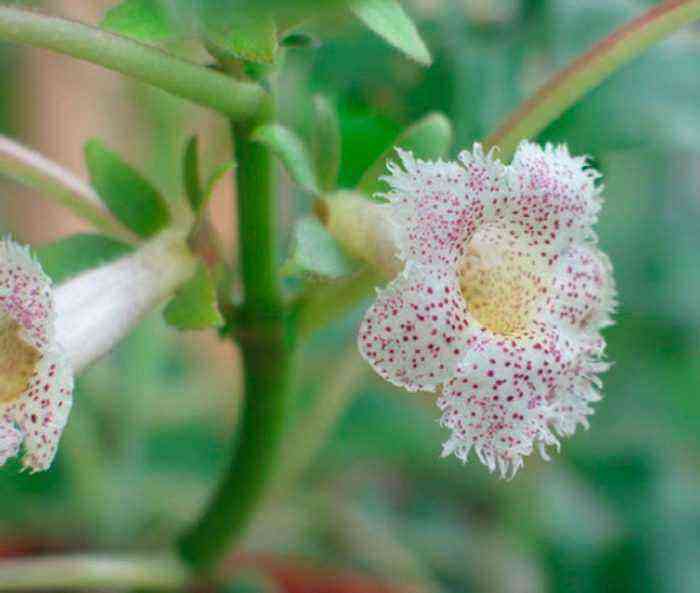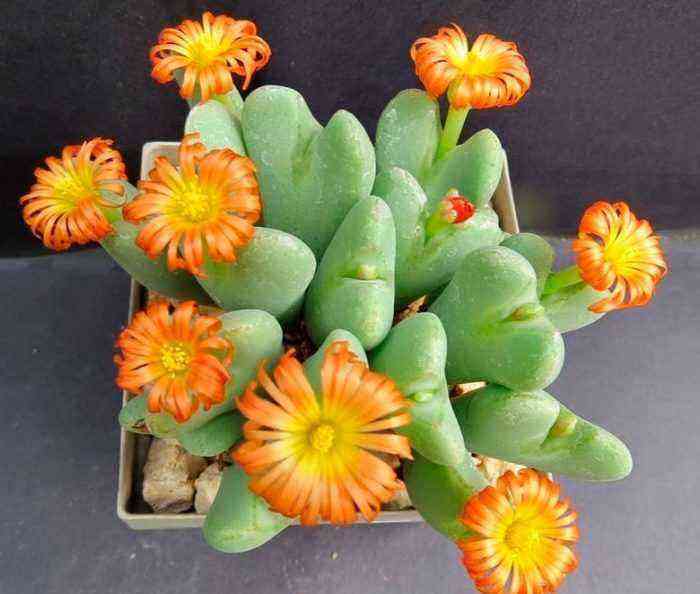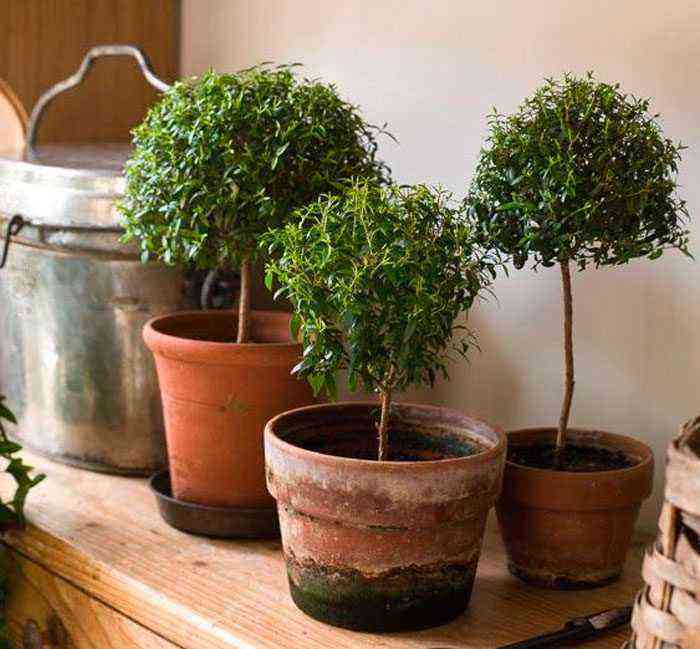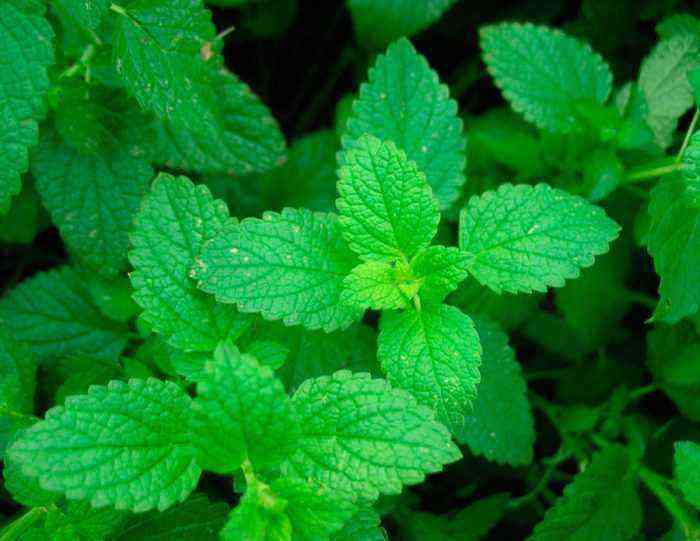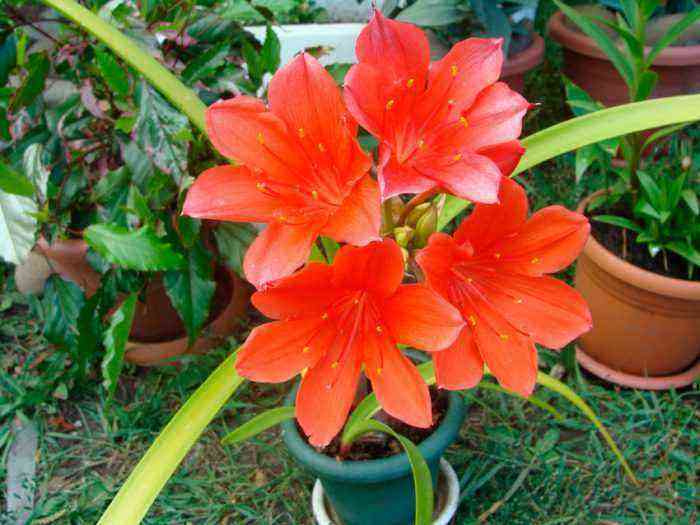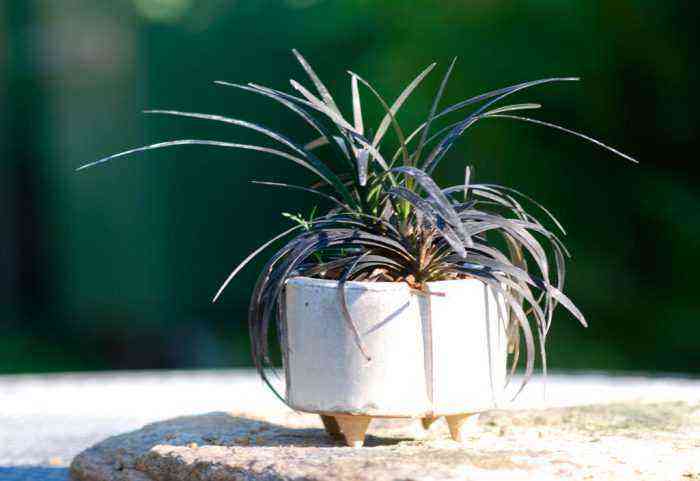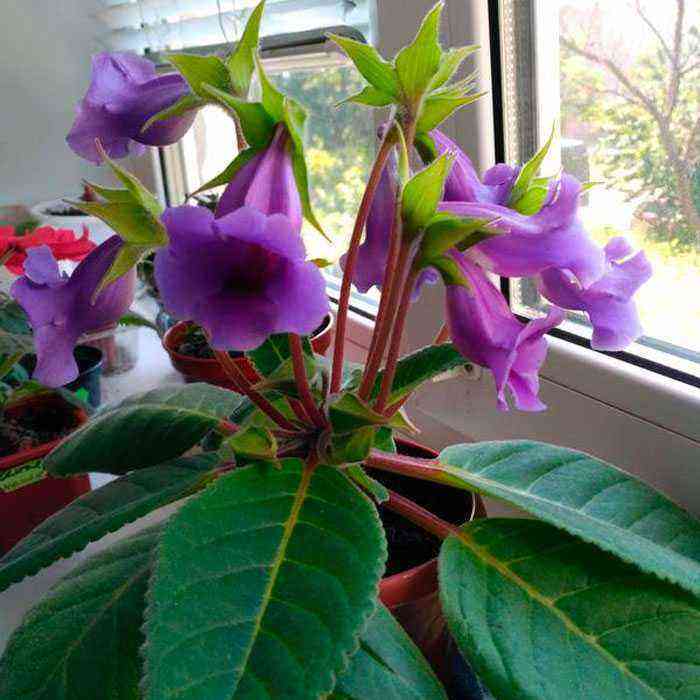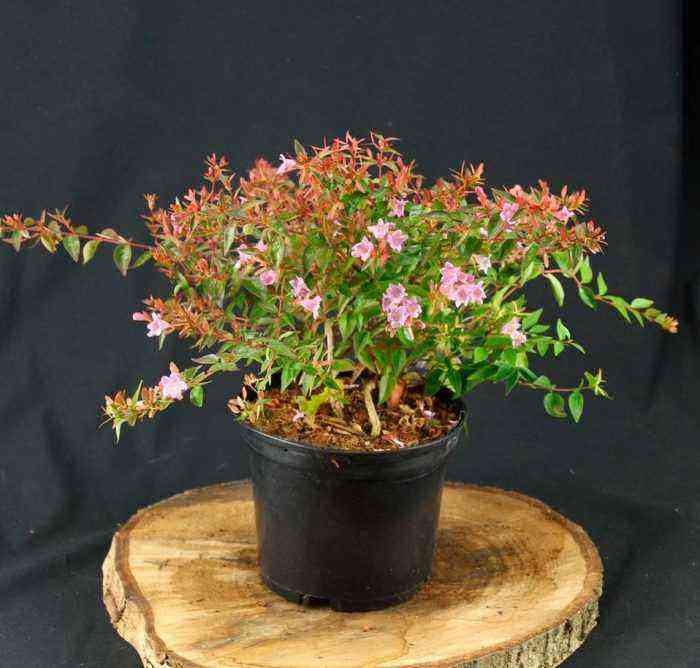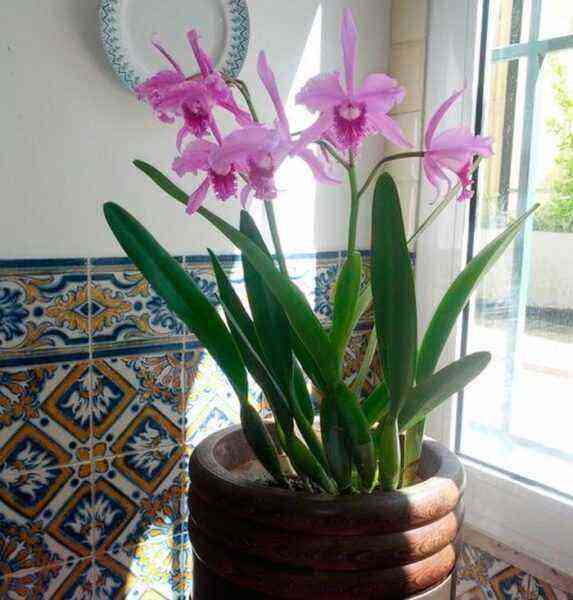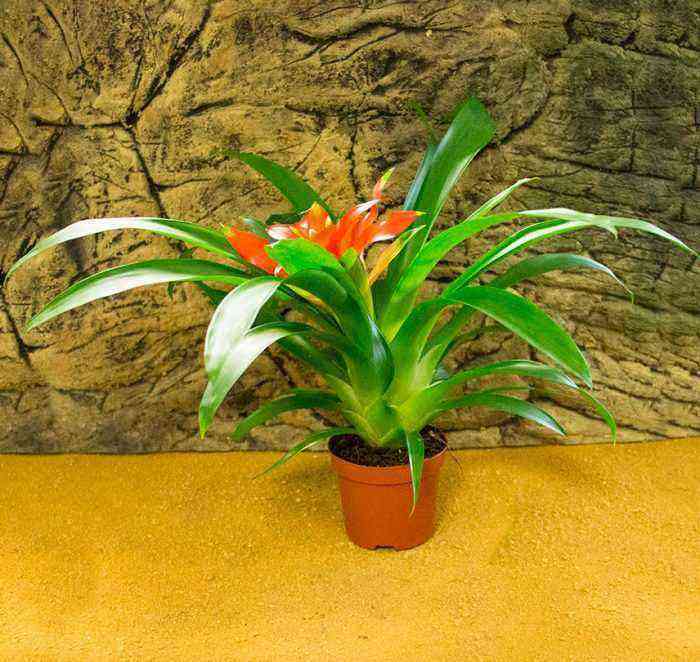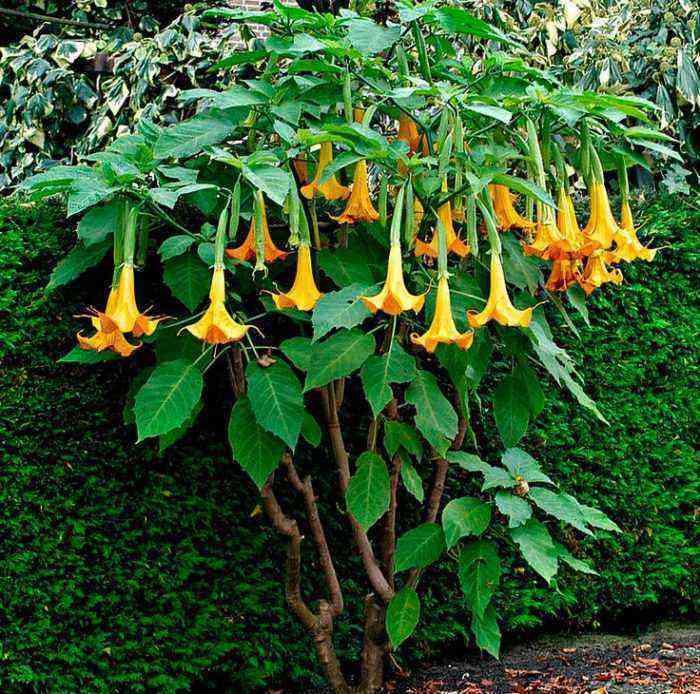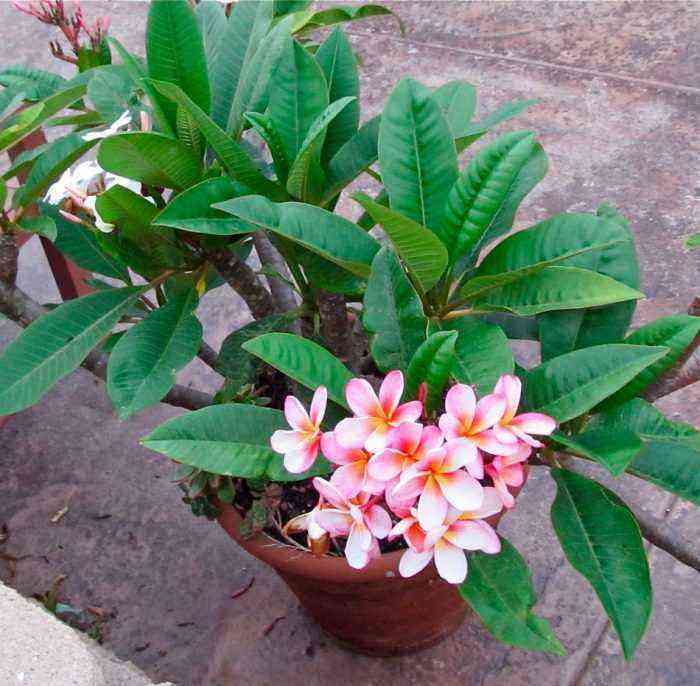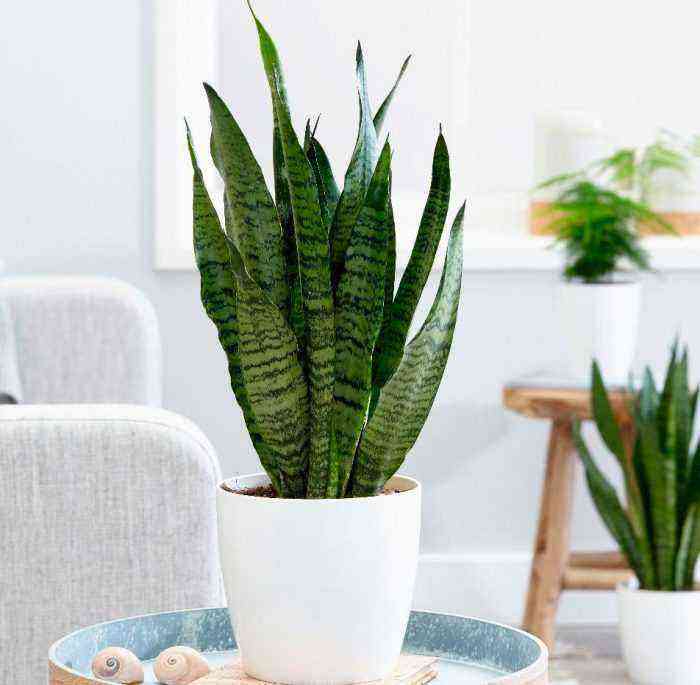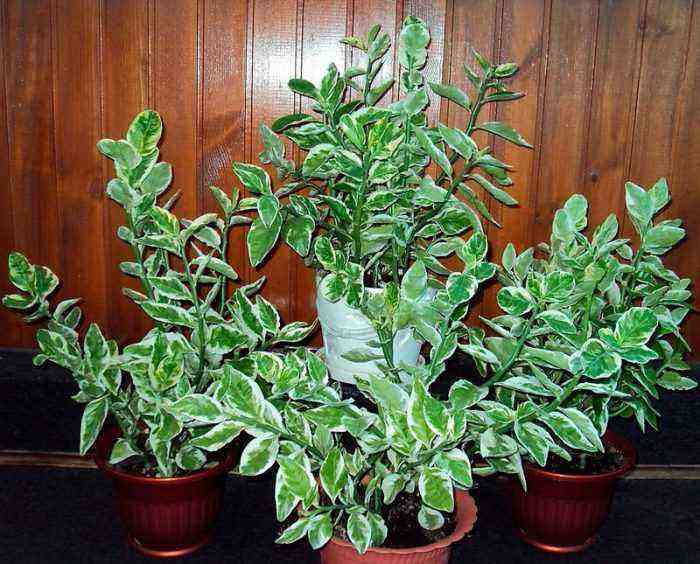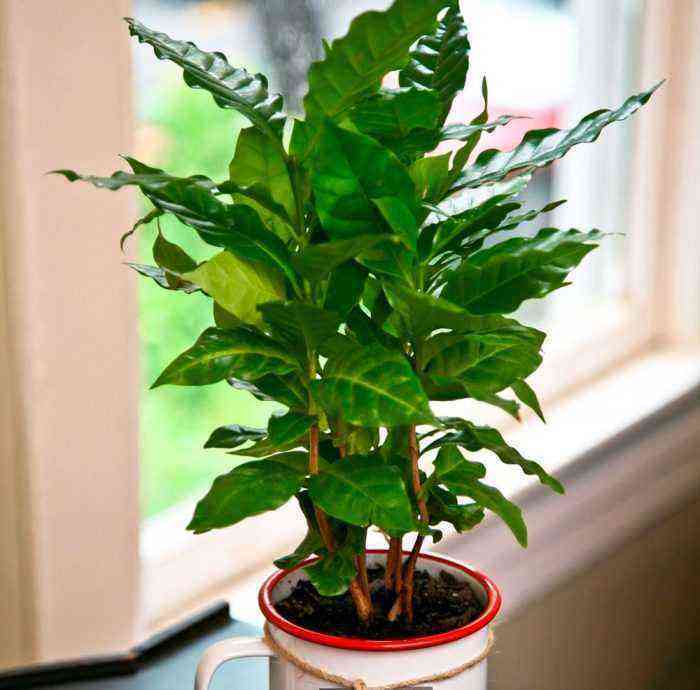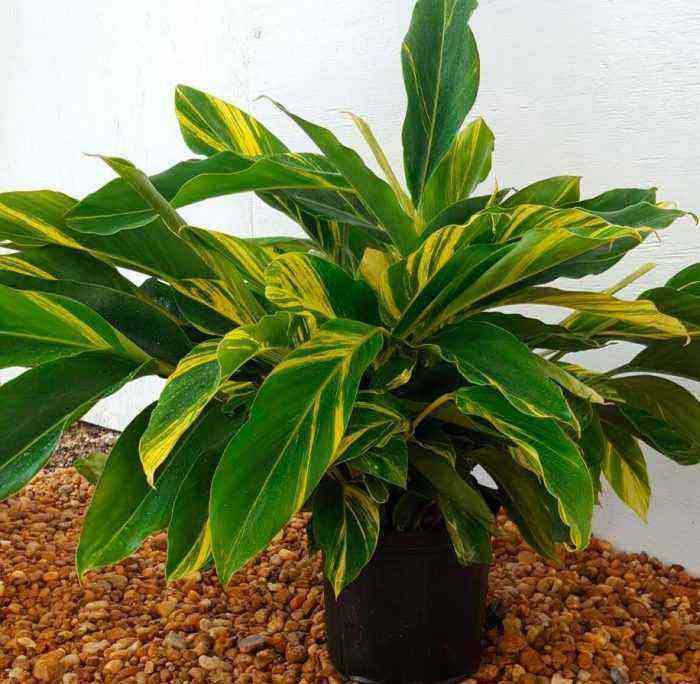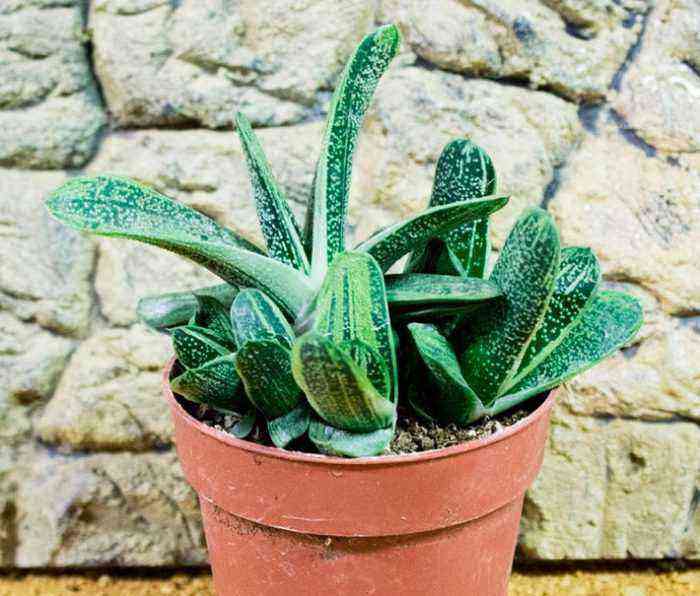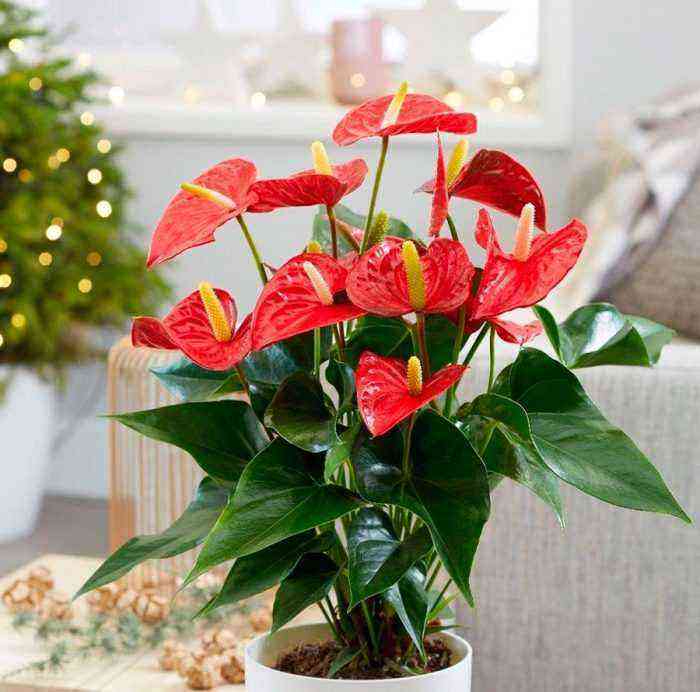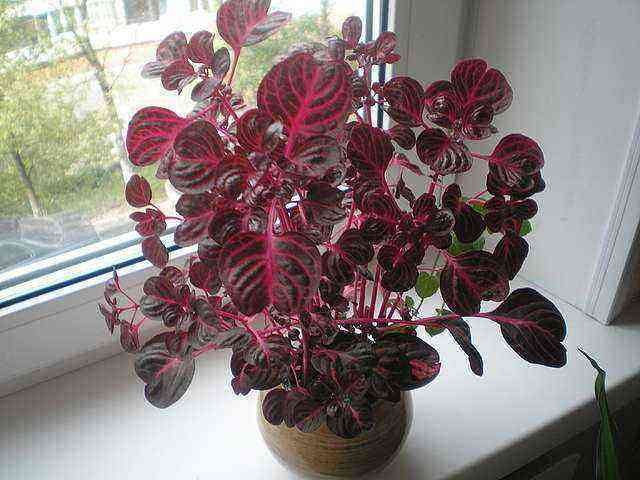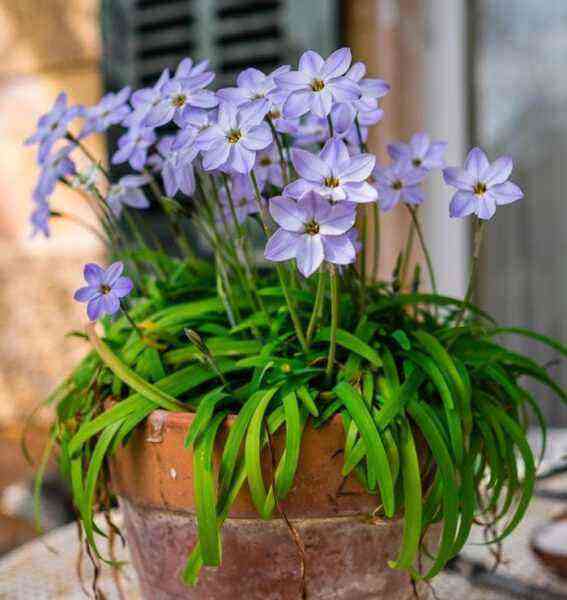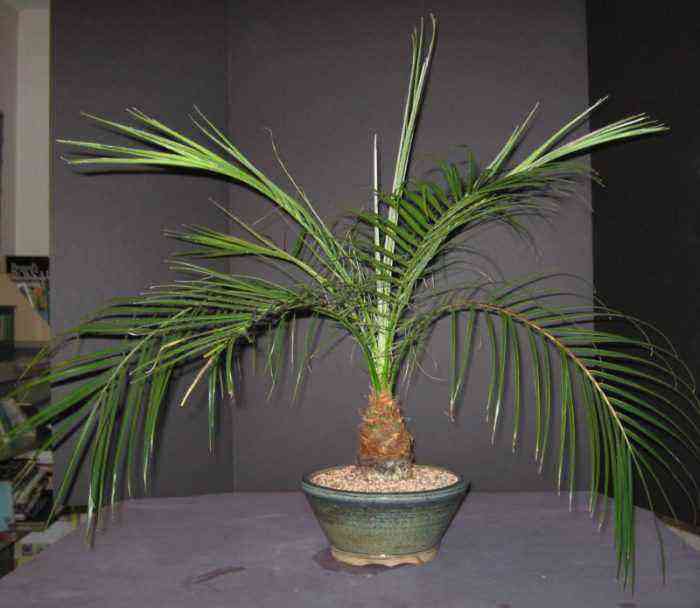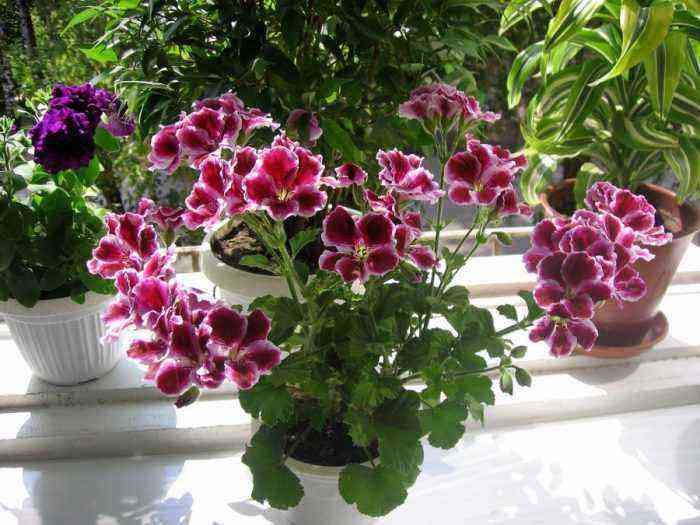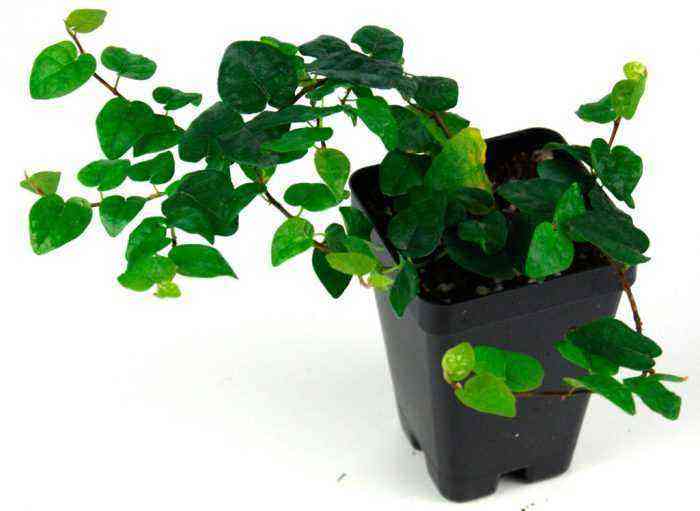Ficus Ali (Binnendijka) is one of the most spectacular representatives of the Ficus family. This species is very popular in indoor culture. Such an unpretentious plant does not need special care, so it is suitable for growing in almost any room. It has a spectacular dense crown that can decorate not only a house or apartment, but also a cafe, office and other establishments.
This plant was discovered in the 19th century by Simon Binnendijk. Thanks to him, many varieties with similar characteristics were combined into one species.
The scientific name Binnendijk was given to the plant in honor of the man who first discovered it. However, he was given a short nickname to make it easier to pronounce. In the wild, ficus is found in India, while it grows in subtropical forests. The bush can reach a height of about 20 m.
Features of ficus Ali
All varieties belonging to the species Ali ficus have long leaf plates pointed at the top, which is considered their characteristic feature. The average length of leaves, similar to willow foliage, is about 30 centimeters. It is because of this that the culture is also popularly called willow or narrow-leaved ficus.
At home, the height of a ficus can be up to two meters, while it looks like a small tree. The surface of the trunk is covered with gray or brown bark. It has many branches that are adorned with lush foliage.
Most of the branches are located at the top of the trunk. Moreover, its lower part is almost completely bare. Young branches are located at the very top of the tree while they grow upward. As the branches grow and mature, the branches begin to descend under their own weight. Since the ficus Ali has a small distance between the sinuses, with proper care it forms a thick, spectacular crown.
Home care for ficus ali
In the wild, ficus Ali prefers to grow in regions with a warm climate, and it is found mainly in forests. In order for indoor ficus to be as effective and lush as possible, it needs to provide optimal conditions for growth, which will be similar to natural ones.
Illumination
What kind of light intensity a plant needs is directly related to its color and variety. If the foliage is monochromatic, then the ficus will feel quite normal under the diffused sunlight. At the same time, it is recommended to put it a little further from the window. Such varieties can be grown in light shade, but it should be borne in mind that this will slow down its development and reduce its decorative effect.
Variegated varieties require a lot of bright light. It is recommended to put such a plant on a southeast or south-facing windowsill. Protect the bush from direct sunlight, which can burn foliage.
Remember that such a tree reacts extremely negatively to a change in the direction of the light source. In this regard, it is extremely undesirable to rearrange it to a new place or turn the pot around its axis.
Temperature
The optimum air temperature for the development of a healthy tree is from 22 to 24 degrees. On hot summer days, it is recommended to provide more frequent humidification from a spray bottle, while watering should be done with cool water.
In winter, it is recommended to remove the ficus from the window. The fact is that the substrate in a pot located on a windowsill can cool too much, despite the fact that the room is warm. This can lead to freezing of the root system. Because of this, the tree can throw off all the leaves, and it will also be susceptible to various diseases.
Do not place the tree near working heating appliances, as the air next to them is excessively dry and warm. It is recommended for him to choose a place away from heating devices and windows, while he should provide additional lighting by installing, for example, a fluorescent lamp.
Air humidity
Ficus Ali is undemanding to the level of humidity in the room. Moreover, it grows and develops best at an air humidity of about 70 percent. To maintain a comfortable microclimate, it is recommended to place the bush as far as possible from operating heating devices.
For hygienic purposes, about twice a week, you need to moisten the foliage of the plant from a spray bottle with settled water. This will help remove dust from the leaves. On hot days in summer, it is recommended to take cooler water to spray the bush, while the procedure is carried out every day late in the evening or early in the morning.
Watering
Particular attention should be paid to watering the trees. It should be watered only after the top layer of the potted substrate dries out. The frequency and abundance of watering is directly related to the size of the plant and the season:
- In the summer, especially on hot days, it is necessary to moisten the soil mixture almost daily in the evening.
- In the winter months, the frequency and abundance of watering is reduced. At the same time, the plant tolerates short-term drought better than stagnant water in the roots.
- Remember that the taller and more massive the tree, the more moisture it needs. At the same time, it is extremely undesirable to plant ficus in an excessively voluminous container, as this is fraught with regular stagnation of water in the substrate. Better to increase the frequency of watering. Remember that young shrubs absorb moisture more slowly, so they are less watered.
After some time after watering, be sure to drain the liquid from the sump. Otherwise, it can cause stagnation of moisture in the substrate, which will lead to the appearance of rot on the roots and the development of the disease.
Substrate
In the flower shop you can find a special mixture for ficuses. Instead, you can purchase a ready-made soil mixture for palm trees, since their characteristics are similar to each other.
If you wish, you can prepare the substrate with your own hands. To do this, combine humus, sand and peat, as well as sod and leafy soil (1: 1: 1: 2: 2). While the plant is young, it needs a looser soil mixture, so all ingredients are combined in equal parts. At the bottom of the container, a good drainage layer must be made; expanded clay or pebbles are suitable for this.
Fertilizer
It is necessary to feed Ali ficus only during the growing season, which begins in March and ends in October. For this, complex fertilizers are used; instead, organic matter and mineral fertilizers can be alternately introduced into the soil.
As a rule, feeding is carried out with a frequency of 1 time in 10 days. Moreover, in the last and first month, their frequency can be reduced to 1 time in 15 days.
Please note that ficus can only be fed by the root method. Never spray the foliage with nutritious mixtures, as this can harm the tree.
In winter, the growth of the bush stops, and therefore it does not need additional nutrients. Therefore, feeding is not carried out in winter.
Crown formation
If you do not carry out formative pruning, then soon the overgrown crown will lose its decorative effect. In this connection, scraps should not be neglected, and they should be carried out regularly.
In autumn, prune all branches, while their distance from the trunk should be approximately the same. Thanks to this, with the onset of spring, the active growth of young shoots will begin. As a result, the trunk will become lower and the crown will be more magnificent.
If desired, the ficus trunk can be given a spectacular shape, which is called a “pigtail”. While the stems are young, they are very elastic and can be easily twisted together. Initially, 2 young bushes are planted in one container, while their trunks should be located very close to each other.
A few years after the lignification of the bark, you will see a very spectacular and unusual twisted trunk, decorated with a dense crown. Such ficuses quite often appear in the photos of rich interiors, on the creation of which famous designers worked.
Ficus ali transplant
Such a plant is transplanted as needed, when the root system or the bush itself grows strongly. The new container should be maximum 30 mm in diameter larger than the old one.
Before the tree turns five years old, you need to transplant it by transshipment every year at the very beginning of the growing season (in February or March). Older bushes are transplanted or replaced with the upper layer of the substrate less often, or rather, once every couple of years.
Before proceeding with transplanting, prepare fresh substrate and a new pot:
- Moisten the potting soil liberally.
- The bottom of the new container is closed with a drainage layer, which is covered with fresh soil mixture (layer 20–30 mm).
- Remove the tree carefully from the pot. To do this, turn it upside down and gently tap on the walls. If the plant is powerful and tall, then first, using a long knife, separate the substrate from the walls of the container, and then grab the trunk of the ficus and pull it out along with the root system and an earthen clod.
- Next, the tree is placed in the center of the new pot. Carefully fill all voids with new potting soil. Also, do not forget to update the substrate on top, a 20 mm layer is enough.
- The transplanted ficus Ali should spend 1 or 2 days in a shaded place. Then they moisten the substrate in the pot and put the bush in a permanent place.
Methods of reproduction
During the formative pruning of Ali’s indoor ficus, many cuttings are left that can be used for rooting. To do this, they are placed in a glass of water, while it must be systematically replaced with fresh water. Cuttings will take root faster in a bright and warm place.
Rooting of the segments takes place quite quickly. The first roots can be seen after about 15 days. Planting cuttings into a loose substrate is carried out after the length of their roots reaches 30 mm.
Remember that young bushes can be easily affected by a variety of diseases. That is why the preparation of the substrate used for planting should be taken more responsibly. It must be steamed and disinfected. To begin with, the soil mixture must be spilled with freshly boiled water, and then it is calcined in a microwave or oven at a temperature of 70 degrees for 15-30 minutes. (depends on power).
Possible problems
Problems with Ali’s homemade ficus usually arise if it is not properly looked after. For example:
- The foliage is flying around or has changed its color… Carefully study the conditions for keeping the tree and try to correct any mistakes.
- Rot has appeared on the roots and foliage is flying around… This is due to the regular stagnation of water in the soil mixture. Also pay special attention to the quality of the water, it is better if it is rainwater (from an ecologically clean area) or thawed. Tap water should remain for several days, and you do not need to cover it from above. Then apple cider vinegar is added to it to soften (1 teaspoon for 1 liter of water).
- Partial flying around of sheet plates… The plant stands in a cold place in winter, which is why the soil mixture in the pot is frozen.
- Foliage becomes faded or yellow… The bush feels an acute lack of light.
- Slow growth and low resistance to pests… The plant is often rotated relative to the light source or rearranged to a new location. The fact is that this becomes the cause of the strongest stress for the ficus, which weakens its resistance to diseases and pests.
- vermin… Most often, such pests as settle on the bush: scale insects and spider mites. If you find them, give the plant a warm shower, and then treat it with a spray bottle with a solution of laundry soap. It is also recommended to treat the tree with an appropriate pesticide.
Types of ficus ali with photos and names
There are many types of ficus in the wild, and each of them also includes many varieties. In indoor culture, only four varieties of Ali ficus are most widespread. They differ among themselves in color or foliage width.
Ali (Alii)
If we compare this variety with others, then the widest leaves can be distinguished from it. They have a uniform dark green color. While the bush is young, its bark is brown, but over time its color changes to gray, while the veins become clearly visible.
Amstel King
The width of the leaf plates of this variety is about 70 mm. They are distinguished by a uniform green color.
Amstel Gold
The foliage of this variety is variegated. On a yellowish background, specks are randomly scattered, painted in a variety of shades of green. The tree is considered highly decorative; it can decorate both an office and an apartment.
Amstel Queen (Queen)
This plant is very similar to the Amstel King variety, but its leaf plates are wider.

